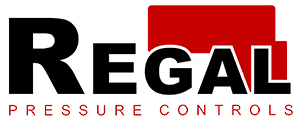Water level controller is a device used to control the level of liquid water, widely used in industry, agriculture, household and other fields. The working principle of the water level controller is to utilize the float, solenoid valve, sensor and other components to automatically switch on and off the pump or valve according to the set upper and lower limits of the water level in order to achieve the purpose of controlling the water level.
The basic structure of the water level controller is as follows:
| Tank (Water Source) | | Tank (Pool) |
| Water Pump (Valve) | Water Level Sensor | Solenoid Valve (Relay)
| Solenoid Valve (Relay) | Float Switch | Controller (Circuit Board)
| | Controller (circuit board) | <—->| Controller (circuit board) |
The water level controller works as follows:
When the water level of the tank (pool) is lower than the set lower limit, the float switch closes and sends a low level signal to the controller (circuit board), which receives the signal and sends a high level signal to the solenoid valve (relay) to open the solenoid valve (relay), and sends a high level signal to the pump (valve) to activate the pump (valve), which pumps water from the tank (water source) to the tank (pool).
When the water level in the tank (pool) is higher than the set upper limit, the float switch opens and sends a high level signal to the controller (circuit board), which receives the signal and sends a low level signal to the solenoid valve (relay), which closes the solenoid valve (relay) and sends a low level signal to the water pump (valve), which stops the water pump (valve) and stops pumping water from the tank (water source) to the tank (pool). Water Level Sensor.
The water level sensor is a device used to detect the water level, which can display the height of the water level in the tank (pool) in real time, and can also be connected to the controller (circuit board) as an auxiliary or backup means of water level control.
The advantages of the water level controller are:
It can realize automatic control of water level, save manpower and time, improve efficiency and safety.
It can avoid overflowing or drying up of water tanks (pools), protect water resources and equipment, and reduce waste and loss.
The upper and lower limits of water level can be set according to needs, adapting to different occasions and needs.
It can be matched with other equipment or systems to realize more complex functions and effects.
Disadvantages of water level controllers are:
Requires installation and maintenance, adding cost and trouble.
May malfunction or malfunction, resulting in abnormal or dangerous water level.
May be subject to external interference or influence, affecting the accuracy and stability of the water level.
